So, you have a block of land, and you like to hunt deer… How do you make sure the deer are interested in coming through your area? Plant a food plot.
Food plots come into play mostly in semi-rural and agricultural regions where medium to large privately-owned plots of land are prevalent.
It offers the landowner the opportunity to develop the land to improve deer habitat.
In this deer food plot 101 guide, we are going to go over everything deer food plots; including:
Let’s get started.
What Is a Food Plot?
A food plot is an area on a block of land that has been allocated for planting edible vegetation, intending to allow deer to feed on it.
Usually starting from a quarter of an acre upwards, the growth of deer food sources on a block of land is designed to bring deer into the area and keep them spending more time in that place.
As a whole, it is recommended to look to plant food plots on 5-10% of your total property acreage to affect local deer herd presence positively.
Food plots can be made up of a variety of different plants and vegetation options, all with their own set of pros and cons. It also depends on the:
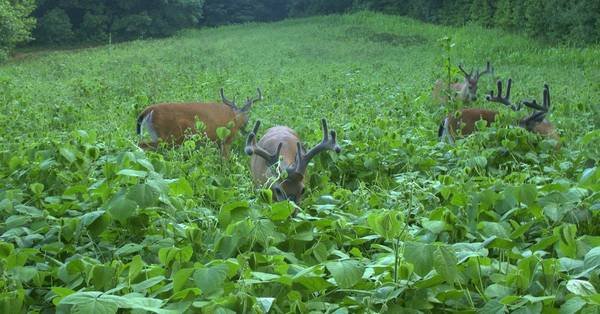
Are Deer Food Plots Worth It?
In our opinion: Yes.
Deer food plots are a very common and successful method for promoting healthy deer populations throughout agricultural and privately-owned vegetated land regions.
Ensuring that deer in the area have quality, reliable food sources increases your odds of having deer frequent your area more often and for longer.
Whether a deer plot is worth it for you will depend mostly on what you value most and how much effort you are willing to put in to improve your hunting experience.
It is not always a cheap or easy process to plant and maintain food plots. However, you can do it at a reasonable price if you already have access to the right equipment.
Based on a recent Iowa farm survey, you may be looking at an approximate cost of around $270 per acre, excluding the use of equipment.
So before undertaking a deer plot project, you will need to determine how much you value:
What to Plant to Attract Deer?
When it comes to planting deer food plots, it is generally worthwhile planting a variety of feed options.
It helps diversify the plot, cater to deer preferences, and minimize the risk if one type of plant doesn’t adapt well to the conditions.
There are, however, some go-to varieties that hunters and landowners lean towards when building out their food plot areas:
Clover
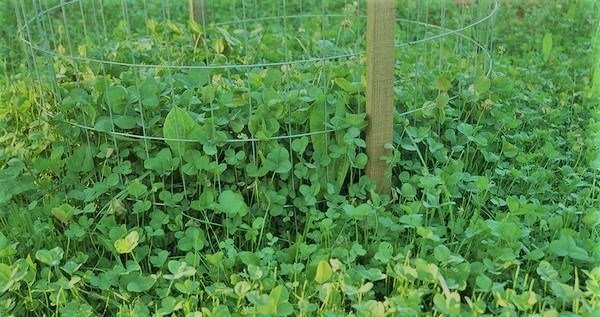
If you want a food plot species that doesn’t require too much maintenance, clover may be the best option for you.
Clover mixes well with other plant species but can also do well on its own.
You can plant it in the early spring, and it does not take long to grow, allowing for a good deer food source from spring through fall.
Why is it important?
Clover is exciting to landowners because it does not require a large amount of space to grow. Therefore, it can be an excellent option for smaller hunting plots instead of larger feeding plots.
They can also grow outside of direct sunlight, which is helpful if you want to entice deer into areas near a treestand location.
Soybeans

One of the deer plot favorites, soybeans can survive for the majority of the year, with harsh winter periods the exception.
Planting these after the winter thaw, early May will mean that you have a good deer food source in action from spring through the heat of summer and deep into the fall.
They may also survive through the early portions of winter.
But wait, there’s more…
Soybeans may take a little more investment, both in money and sweat labor.
But they are a great attractant for deer given their high protein content. Bucks require protein content for antler growth, and while it does, it promotes milk production.
Grains
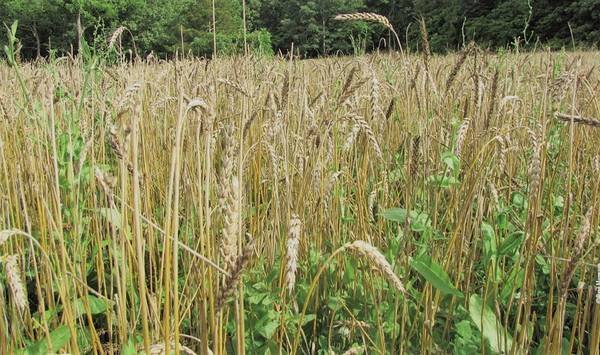
This category includes common cereal grains such as oats, rye, or wheat.
The growing capabilities of different grains vary depending on the conditions in which they’re planted.
Rye tends to fare better in slightly drier soil conditions, whereas wheat and oats grow better in damp (or even wet) soil.
These grains are great for the early fall but can have a bit of a difficult time as the season wears on when the frost and snow come in.
Rye is known for being resilient to poorer soil conditions; when the ground may be drier or more acidic.
Oat and wheat are better suited to a nutritional, balanced soil profile.
Corn

Corn is a commonly selected food plot choice across the US. This option offers deer a reliable carbohydrate source throughout the prime hunting season, through the early frost and into the start of winter.
Due to the high-standing profile of corn, they also offer deer the feeling of security and cover, which makes it an even more inviting environment for them to spend time in.
Corn is best planted in the mid-late spring when the temperatures are warming up for summer.
Brassicas
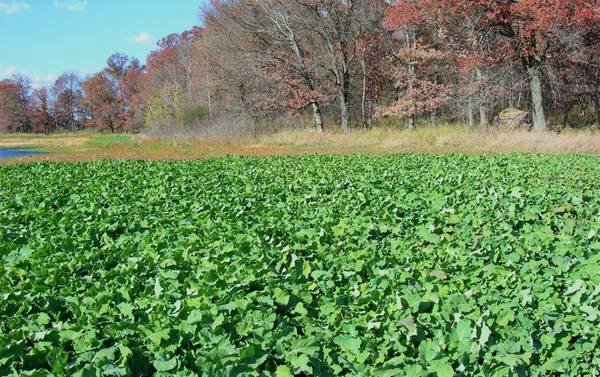
This category includes various varieties such as chicory, radishes, canola, kale, and turnips.
These plants tend to thrive in areas with a decent moisture level and handle varying soil pH levels greater than some other species.
They also do well during colder periods as a deer food source later into the winter.
They do, however, require a reasonable amount of fertilizer to maintain (more on that later).
August is a good time to plant these, as it allows time to take form leading into the fall and winter seasons.
When to Plant Deer Food Plots?
The time of year to plant your food plot will depend primarily on
When you know the type of plant and which season you want it ready for, you then need to work backwards to when the best planting time would be.
I’ll explain...
Preparing to set up a deer food plot takes time, especially if additional work needs to be put into upgrading the quality of the soil.
To adjust the pH levels in the soil, you may need to spread lime across the field.
When the lime breaks down and interacts with the soil, it may take a few weeks to a few months until you get closer to optimal conditions.
Once the soil is optimal, it comes down to factor in the expected growth time for whichever plant(s) you wish to grow.
You might be wondering: “when is the best time to plant a food plot?”
The best time to put the seeds into the soil is shortly before rainfall. It is common for the ground to be dry, and even with watering, the seeds may have difficulty getting started.
Ensuring you get them into the soil ahead of rain allows them an opportunity to hydrate adequately to start their growth process.
Fall Food Plots for Deer
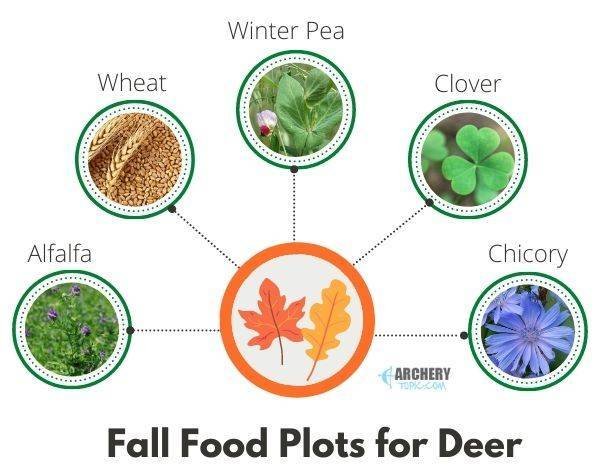
When planting for the fall season, you want to make sure you get in with enough time for the vegetation to get established before the colder temperature and frost periods roll in.
Late summer to early fall is a good time for planting many species like wheat, oats, rye, clover, winter pea, alfalfa, or chicory.
These tend to grow reasonably quickly and are a great option for most of the fall season.
However, if you want to push your season deeper, you may need to look at some more resilient plant species.
Winter Food Plots for Deer
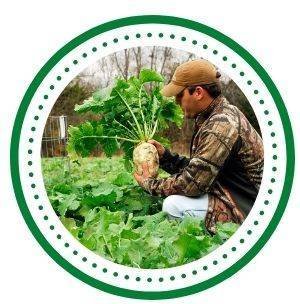
Brassica category plants tend to thrive further into the colder months than some other food plot options.
When more fragile plants frost over or shrivel up during the colder weeks and months, these hold form for longer.
And they can become even more appealing to deer as the cold affects the composition of the plant.
It gets better...
Some of the starches within these plants can turn sugary during this period, making them even more attractive to deer.
If your deer hunting season extends beyond November, these are likely to be the best choice.
Spring Food Plots for Deer

Clover and soybeans are good options for a spring food plot.
Even though it may be outside of deer hunting season, it can definitely be worthwhile trying to run a year-round food plot, or at least pre-fall in order to get the deer accustomed to visiting your area.
Deer are creatures of habit, so if you can tilt their habits your direction, the better chance of fall success.
Here’s the tip:
If looking to run a spring deer plot, it can be helpful to treat the area with herbicides late in the fall to allow the plant matter in the soil to break down across the course of the winter.
This will help to till the soil when the time comes for planting in the spring.
Summer Food Plots for Deer
Most of the spring food plot options continue to grow and provide nutrition throughout the summer.
Clover and soybeans are a good choice for this time of year, especially if you can get them planted and growing during the spring rains, prior to the onset of the summer heat.
Where to Plant Food Plots?
The area you choose to set up your deer food plot is pivotal to the level of success you will achieve from it.
It’s due to the quality of the feed growth, deer activity level, and sense of comfort in that area.
Feeding Plots vs. Hunting Plots
The amount of feed and space you plant will depend on your intentions for the land and what you wish to offer the deer.
What’s the difference?
Hunting plots are usually smaller food plots designed for deer to move through your property, stopping in distinct locations you intend on hunting.
Feeding plots are usually larger and designed to create a bit more of a sanctuary for deer; to feed and spend time.
These spots are hunted less often and designed to bring deer to the area and create an environment that promotes their presence in and around the property.
Actively hunting an area like this can potentially damage its reputation with deer and be short-lived as a haven for deer.
These are best used in conjunction with nearby hunting plots along with deer travel areas.
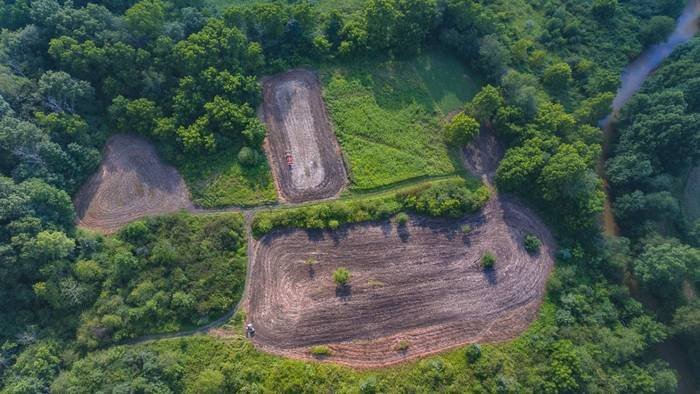
Via grandviewoutdoors.com
Central Positioning
Ideally, you would place the main food plot areas towards the center of your property. This serves a few different functions.
1. Having the plot in the center of your block maximizes the time that the deer spend within the boundaries of your land.
And it will have the travel through your land to get to the plot, allowing for more potential travel corridor hunting locations.
2. You want your food plots to be out of view of roads or trafficked areas where possible.
It will help keep the area free from wandering eyes and minimize competition in the surrounding areas. The public is less likely to notice active deer activity in and around your property.
Soil and Surrounding Vegetation

Via osgnetworks.tv
Ideally, you would have soil that is not too rocky, reasonably fertile, doesn’t drain too quickly (retains moisture), and is exposed to regular sunlight.
Sometimes areas that are not rich enough for lush plant vegetation can be used to create native plant and grass areas.
They create habitat for small game animals, travel corridors, and areas for the deer to bed.
A food plot surrounded by thick brush will make deer feel safer and more likely to spend time in the area.
Deer are skittish and wary by nature, so to have surrounding shrubbery that they can hide in if spooked.
It also means the deer are more comfortable stepping out into the open, leaving them feeling less exposed.
How to Plant Food Plots for Deer (4 Basic Steps):
1. Get the Soil Tested
Testing the soil is one of the most important factors when starting up a food plot. A soil test will summarize the amount of nitrogen, lime, potassium, and phosphorus in the soil.
Let me explain why
Knowing this will help you determine the amount of work, fertilizer, and lime required to ensure the best growing conditions for the vegetation to plant.
The lime is used to adjust the pH levels of the soil. Fertilizer gives the seeds and plants enough nutrition to grow while also helping with moisture retention.
Soil samples are generally quite affordable and accessible and can be done from various places, including sometimes local university programs.
Here’s how:
To take a sample, all you need to do is extract some soil from various potential planting locations, spread it out, allow it to dry, bag it and send it for testing.
2. Clean/Open the Area
Once you know the area you wish to plant your food plot, you need to clear and clean up the area.
Removing competing vegetation
It means removing most (or all) existing vegetation, weeds, shrubs, grasses, and so forth to create an open space for planting.
Removing competing vegetation will give your new crop the best opportunity to thrive as it shouldn’t be overrun by other plant species fighting for the same resources or overtaking it.
Removing excess rock and debris from the soil will also be beneficial.
Trim back canopy
Additionally, if any trees or obstructions are restricting the amount of sunlight hitting the food plot area, it would also be worthwhile trimming back some of that excess canopy to allow enough sun through for the new plants to thrive.
3. Improve the Soil Quality
Once you have cleared the area and had your soil levels tested, you want to make any necessary adjustments to the quality of the soil before planting.
Most plant species you may wish to grow to restrict need approximately a neutral pH level of 7.0 (or higher) to develop and grow effectively.
Low pH levels can result in poor plant growth, if at all.
How to improve the pH level:
To increase and improve the pH levels of the soil, you will need to add lime.
Potentially a few tons of it, depending on the size of the plot area and the pH level you need to raise it to.
The lime has to be tilled into the ground in order to break down and mix in with the soil properly.
4. Seed Planting
As mentioned earlier, there are different types of food plot seeds you can plant.
Once you make sure you have the best seed options for your conditions (amount of sunlight, soil type/quality, climate, hydration level), you want to be sure to use proper planting techniques.
When it comes to proper seed planting, you want the correct equipment for the job.
Here’s why:
Not doing this stage properly can result in issues with weeds and/or poor seed germination.
Ideally, you will also treat the soil itself to reduce the risk of weeds and other unwanted species impeding your plot growth.
And how:
This step may well require a decent investment into renting a field tractor or comparable equipment, depending on the area and the amount of work to be done.
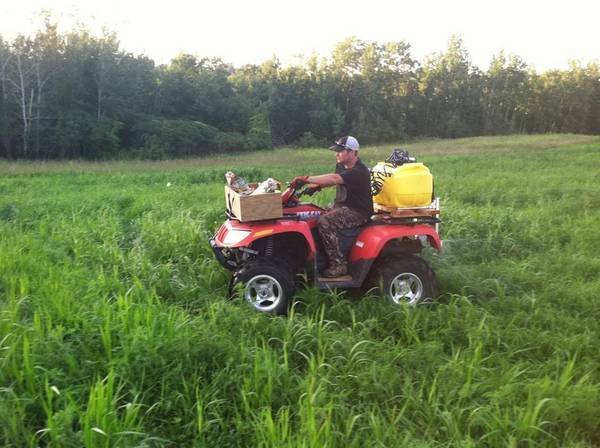
via legendarywhitetails.com
Deer Food Plots Equipment (may include but not limited to):
Doing this stage properly will make all the difference in the long run.
How to Maintain Your Food Plot
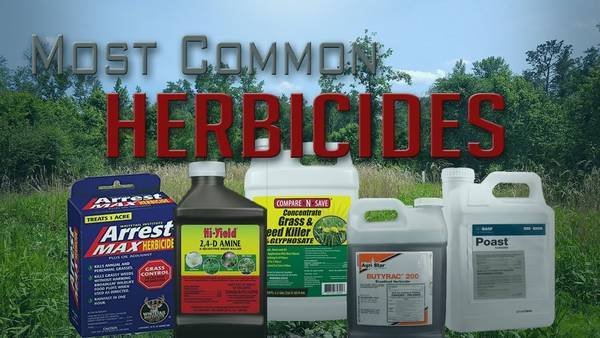
After you have your food plot up and going, it will still require semi-regular maintenance.
By default, nature tends to take over, so extra work will have to be put in to ensure that weeds are not working their way through the plot, taking over the vegetation you have planted.
Methods for maintenance may include:
Then again
If using herbicides in and around your plot, make sure that you know which ones are best suited to work alongside the vegetation you have planted, as not to impact your plot negatively.
It is also worthwhile to take occasional soil samples to ensure the pH balances and ground nutrition are remaining optimal.
Extra Deer Hunting Food Plot Tips
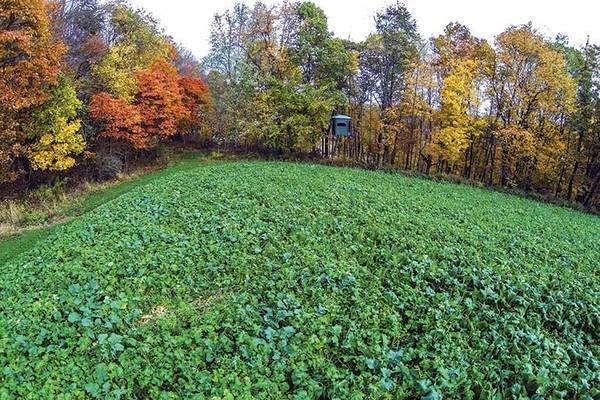
Via osgnetworks.tv
Multiple Stands (Wind)
The cost, time, and effort of setting up a deer food plot can become a waste if you only have a single hunting stand or blind option.
While building out your food plot, factor in where you may be able to set up to hunt, considering changing wind directions.
Think about it
Having one or two additional positions per food plot will give you a better chance to utilize your opportunities on any given day.
It’s rather than sitting back and waiting for a day where the wind favors your stand location.
Hold Back on the Seed
One key mistake people can make is going too heavy on the seed.
By adding too much seed, you risk the plants competing for water and soil nutrients, which could hinder the growth of your plot.
It is essential to pay attention to the recommendations for seed spacing for your chosen plant type to minimize plant competition and optimize crop density.
On the other hand
Extra seed should last until at least the following season, depending on the seed type, if stored correctly.
To keep the seed in good condition, you want to ensure that they are stored in a dry, cool area.
Weed Killing
If using products like RoundUp to kill the weeds, it is best to wait until the weeds are present as it is more effective at killing existing weeds than weed-prevention measures.
How long should you wait?
Once sprayed, it is recommended to wait approximately one week before tilling the soil to make sure the weeds are no longer active instead of spreading still-alive weeds around.
Summary
When hunting on private lots and agricultural lands, developing food plots can be a great way of bringing deer onto your land, therefore increasing your chance of hunting success.
To ensure a successful deer plot, you’ll need to:
Hitting all of these key areas will go a long way to ensure you create good feeding and traveling environments for deer and a better area to hunt.
Do you have any experience with deer food plots? Are you interested in giving it a try? We would love to hear your thoughts and comments on my deer food plot 101!
